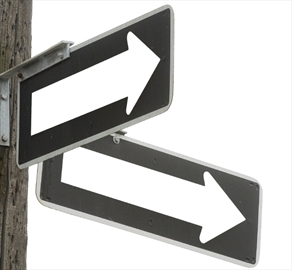pr 17, 2015 | Vote 0 0
Why one-way streets are the absolute worst
ONE WAY STREETS
Scott Gardner,Spectator file photo
In John Gilderbloom’s experience, the notorious streets are invariably the one-way streets
Hamilton Spectator
By
Emily Badger
WASHINGTON In John Gilderbloom's experience, the notorious streets are invariably the one-way streets. These are the streets lined with foreclosed homes and empty storefronts, the streets that look neglected and feel unsafe, the streets where you might find drug dealers at night.
"Sociologically, the way one-way streets work," he says, "[is that] if there are two or more lanes, a person can just pull over and make a deal, while other traffic can easily pass them by."
It's also easier on a high-speed one-way road to keep an eye out for police or flee from the scene of a crime. At least, this is the pattern Gilderbloom, director of the Center for Sustainable Urban Neighborhoods at the University of Louisville, has observed in San Francisco, in Los Angeles, in Houston and Washington, D.C., where streets that once flowed both directions were converted in the 1950s and '60s into fast-moving one-way thoroughfares to help cars speed through town. The places where this happened, Gilderbloom noticed, deteriorated.
"I thought about that for a long time," he says. "But we didn't have much empirical data on it."
Where he lives now in Louisville, he and fellow researchers have begun to prove the curious link between how we engineer roads and what becomes of the neighborhoods around them. Their research offers a lot more fodder for anyone who doesn't like one-way streets simply because they're baffling to navigate.
First, they took advantage of a kind of natural experiment: In 2011, Louisville converted two one-way streets near downtown, each a little more than a mile long, back to two-way traffic. In data that they gathered over the following three years, Gilderbloom and William Riggs found that traffic collisions dropped steeply — by 36 percent on one street and 60 percent on the other — after the conversion, even as the number of cars traveling these roads increased. Crime dropped too, by about a quarter, as crime in the rest of the city was rising. Property values rose, as did business revenue and pedestrian traffic, relative to before the change and to a pair of nearby comparison streets. The city, as a result, now stands to collect higher property tax revenues along these streets, and to spend less sending first-responders to accidents there.
Gilderbloom and Riggs have also done an analysis of the entire city of Louisville, comparing census tracts with multi-lane one-way streets to those without them. The basic pattern holds city-wide: They found that the risk of a crash is twice as high for people riding through neighborhoods with these one-way streets. The property values in census tracts there were also about half the value of homes in the rest of the city.
Some of these findings are more obvious: Traffic tends to move faster on a wide one-way road than on a comparable two-way city street, and slower traffic means fewer accidents. The rest of these results are theoretically connected to each other in complex ways.
To the extent that vice flourishes on neglected high-speed, one-way, getaway roads, two-way streets may be less conducive to certain crimes. If they bring slower traffic and, as a result, more cyclists and pedestrians, that also creates more "eyes on the street" — which, again, deters crime. A decline in crime and calmer traffic in turn may raise property values — which may also increase the demand of residents to police and care for their neighborhood.
"Back 10 to 15 years ago, we would have called it a 'broken windows' theory," says Riggs, an assistant professor of city planning and transportation engineering at California Polytechnic State University. That term, more recently, has gotten caught up in a broader debate about modern police tactics. In this context, though, Riggs is talking about the idea that a virtuous cycle appears in a neighborhood when signs of neglect — dangerous traffic, criminal activity, abandoned homes — start to disappear.
The argument that he makes with Gilderbloom isn't so much that all one-way roads are bad, or that they contribute to these problems in every context. One-way roads can be narrow and quiet, conducive to cycling and pedestrians. Plenty of them aren't wide enough for two-way travel anyway. It's also possible that wider, faster one-way roads might achieve some of these same goals without converting them into two-way streets but by installing other traffic-calming fixes.
Their point is that many cities decided to change these roads in the post-World War II era when we broadly re-engineered cities around the car — and that change over time came at a cost to the neighborhoods that we enabled cars to speed through.
"What we're doing when we put one-way streets there is we're over-engineering automobility," Riggs says, "at the expense of people who want a more livable environment."
Washington Post






